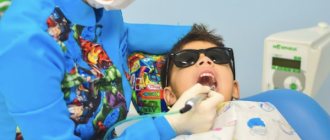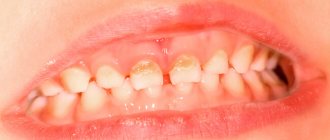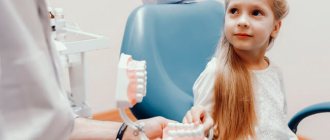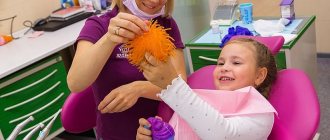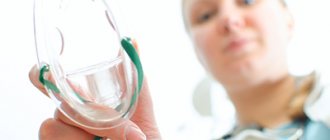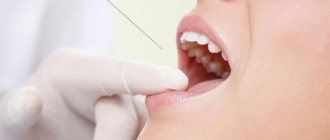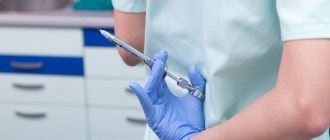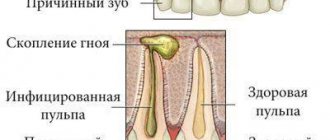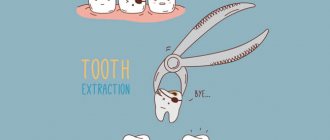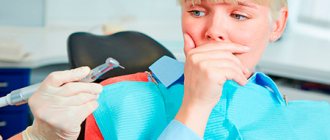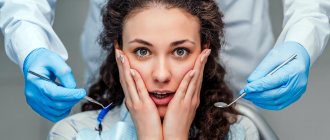Dental treatment is an unpleasant business. And children simply don’t understand why expose themselves to such pain. Therefore, dentists often behave inappropriately, cry, cover their mouths and interfere with procedures.
Many parents think about anesthesia as a solution if their child is afraid of the dentist, but needs treatment. And if 15 years ago this service seemed impossible, today many clinics offer treatment in this way.
Is it possible to remove or treat a child’s teeth under general anesthesia? Are there any alternatives to it? Let's figure it out together.
Preparing your child for a trip to the dental clinic
Of course, under no circumstances should you put off your first trip to the dentist until a critical situation occurs. It is necessary, at a time when there is no worry, to take the child to the doctor, to show him that the dental chair is not at all scary, and the prevention of dental diseases helps to avoid serious problems. In addition, you can encourage your child’s calm behavior with something pleasant for him (but not sweets). Thus, the child’s fear and anxiety towards the doctor are minimized. It is also worth noting that children under three years of age have a reduced pain threshold and thus you can fearlessly take a very young child to the doctor, without fear for him and reinforcing the correct perception of the doctor as an assistant in maintaining health.
Among other things, be sure to provide psychological preparation to your child, talk to him and explain the benefits of regular visits to the doctor. Ask your child what worries him about the upcoming trip to the dental clinic, and do not let him instill fear in himself. Be calm and confident, and your good mood will definitely be passed on to your child.
In addition, you can prepare your child for a trip to the doctor by taking him with you to an adult clinic and demonstrating by personal example that there is nothing wrong with this. However, it is worth warning the doctor about the presence of the child, explaining the rules of behavior and choosing a time for visiting with the least number of patients, so as not to disturb the baby.
However, even if all of the above tips have been taken into account, they do not always guarantee that the child will not worry at all before going to the doctor. It may also happen that it will not be possible to implement all the recommendations on time. In any case, under certain circumstances, parents begin to become interested in the possibility of performing dental procedures with minimal discomfort for the child. As a rule, the first thing that comes to mind is general anesthesia. And if earlier the idea of dentistry under general anesthesia, especially for a small child, seemed completely impossible, now many clinics provide such a service. However, before going for it, it is necessary to arm yourself with the most complete knowledge about the procedure.
Advantages of dental treatment under anesthesia
Dental treatment for children with retention means a high probability of psychological trauma, as well as the risk of damage to soft tissues by the rotating parts of the instrument. Children who are forced to resist cannot perceive the situation as safe.
Dental treatment for children during sleep has a number of undeniable advantages:
- all manipulations are absolutely painless;
- You can treat the maximum number of teeth in one session;
- surgical operations can be performed in the oral cavity;
- The quality of the dentist’s work improves; he is not in a hurry, but works faster.
Working with a calm or sleeping child is a guarantee that treatment will take place as quickly and effectively as possible.
Dentistry and anesthesia
Modern technologies have made available the possibility of anesthesia with a large number of different techniques: drug anesthesia, electroanesthesia, musical analgesia, hypnosis, etc. However, of all these types, only electroanalgesia and drug anesthesia are recognized as valid methods.
The most popular technique is drug anesthesia. It is divided into two types:
- Local anesthesia.
- General anesthesia.
The remaining methods have not received serious distribution, since they require additional conditions for implementation, and the effect is not always significant for medical practice.
Local anesthesia can be carried out either immediately or in stages: first, the place where the injection is planned to be given is desensitized with menthol, lidocaine or benzocaine, and then an anesthetic injection is given. The choice of anesthetic depends on what exactly is planned to be treated. The best choice at the moment is articaine hydrochloride. It is more powerful than novocaine, has less effect on the body and is quickly eliminated. The drug is perfect for both adults and children; moreover, it is safe and well tolerated, so it can also be used by pregnant women, nursing mothers and children over 4 years of age. However, the pain reliever is usually chosen by your doctor - consult with him before starting treatment.
To minimize a child's anxiety before dental procedures, other medications such as lidocaine and sedatives may be used. The latter are especially indicated if the child has a history of increased psycho-emotional reactions, epilepsy or bronchial asthma. Anesthesia is also indicated for children with a tendency to hysteria, increased muscle tone, diseases of the endocrine system, etc.
General anesthesia requires more serious preparation before administration, testing and careful monitoring of the patient's condition.
In addition, not every dental clinic can afford a staff of qualified anesthesiologists and resuscitators, because this requires obtaining a special state license.
Sedation – “light” anesthesia for dental treatment of children
The best alternative to general anesthesia is sedation. This is entering a state of deep sleep (with the full procedure). With shallow (superficial) sedation, the patient can be aware of what is happening and follow all the doctor’s instructions. Superficial sedation with nitrous oxide is most often used in pediatric dentistry. It goes like this: the child is given medical oxygen by inhalation, to which nitrous oxide is mixed for 15 minutes. The dose of nitrous oxide for a child is much less than for an adult; the main part of anesthesia is medical oxygen.
The entire supply of the mixture of gases for sedation is carried out automatically through specialized devices; by the time the operation is completed, the concentration of nitrous oxide gradually decreases until it is completely removed.
The substance nitrous oxide itself causes the child to feel relaxed, in a good mood, and calm. The sedation is shallow, so that nothing prevents the child from hearing the doctor’s instructions and seeing the parents’ presence
.
We can safely say that this type of sedation is absolutely safe for a child: abroad it is used in 60% of cases, and it has been used for many years. This procedure is definitely the best choice for parents interested in stress-free dental procedures for their child. In addition, some specialists can tell fairy tales during sedation and show cartoons, which makes the procedure even less exciting.
General anesthesia and pediatric dentistry
Do children have dental treatment under general anesthesia? They treat and the manipulations themselves are carried out much faster under general anesthesia than under local anesthesia, since the doctor gets the opportunity, without distraction, to work on solving the problem and do it as efficiently as possible. However, it is worth noting the very long preparation for the anesthesia itself. It will be necessary to take tests and get adjusted. It has a number of contraindications - be prepared for this.
Another advantage is that the manipulations are completely painless for the child; he is in deep sleep and the sensitivity of the nervous system is extremely low. As a rule, small patients are under anesthesia for no more than 60 minutes, after which they come to their senses.
General anesthesia is usually performed when it is necessary to solve as many dental problems as possible in as little time as possible.
Nothing will remind the little patient that any manipulations were performed in his mouth at all, except for the absence of problems with the teeth where they were before.
However, it is worth remembering that general anesthesia, no matter how safe it may be, is a serious procedure, and you need to prepare for it with the utmost care: take tests, follow the doctor’s instructions, and abstain from food for a certain time. It is necessary to meet with an anesthesiologist and ask him any questions related to the future procedure, since a lot depends on this, including the health of the child and your peace of mind.
Indications for dental treatment of a child under general anesthesia
It is clearly indicated in certain situations:
- Difficult psycho-emotional state of the child.
- A large volume of dental care (if it is necessary to treat several teeth at once or if help is required immediately.).
- Mental illnesses, neurological diseases. For certain diseases, turning off consciousness is simply necessary to make dental treatment possible in principle.
- Ineffectiveness (lack of effect) of local anesthesia. It often happens that the patient turns out to be insensitive to the action of local painkillers, and in this case, in order to be able to perform this or that procedure, general anesthesia is switched on.
- Allergic reactions to certain anesthetics. In case of allergic reactions, it is necessary to change the drug to one that will not cause an allergy. In case of a severe reaction to painkillers, there is no choice but to use full anesthesia.
How children's teeth are treated under general anesthesia
General anesthesia is performed by inhalation or non-inhalation methods. In dentistry, only the inhalation method is used.
To conduct general anesthesia for a child, the highest qualification of an anesthesiologist-resuscitator is necessary, and only with confirmation of this qualification can the clinic hire him to perform general anesthesia on its patients. After all, removing teeth from a child under general anesthesia is practically a small operation.
At the moment, the safest drugs for anesthesia are used, allowing the child to come out of it very quickly without noticing anything. These drugs are almost instantly eliminated from the child’s body, leaving no traces of their presence.
When carrying out treatment under general anesthesia, there must be two anesthesiologists in the office (a pediatric and an anesthesiologist-resuscitator), a pediatric dentist and his assistant.
Also, immediately after waking up, the child should be observed by a doctor for some time to make sure that everything went well and the child does not feel any problems after waking up.
Is general anesthesia dangerous?
If everything was done correctly, all the requirements for general anesthesia are met, then dental treatment under full anesthesia is not only safe, but also absolutely painless for young patients, and it will allow parents to quickly develop a calm attitude towards dentistry in their child and save a lot of nerve cells.
So is it necessary to treat a child’s teeth under general anesthesia? It is absolutely up to the parent to decide whether to do it or not. Most often, general anesthesia or sedation during dental treatment for a child not only does not harm, but helps. You can immediately carry out a number of procedures (especially if the situation is advanced). This is also useful in the long term - the child will not be afraid of dentists and will remain calm when visiting them, which, of course, is very important for oral health. Reviews from patients and doctors confirm this. Parents most often thank doctors for painless and problem-free dental treatment, and young patients are simply satisfied that everything is over. Doctors are glad to have the opportunity to concentrate on solving a specific problem and not be distracted by the child’s entreaties and emotional reactions. Thus, we can say that dental treatment under general anesthesia is a service that is quite in demand on the dental market.
So, removing a child’s teeth under general anesthesia or treating them is much easier than without it. However, it is worth emphasizing once again that general anesthesia is a serious intervention in the body, and its use is justified only if other methods of therapy are impossible or will do more harm than good. If you need a “softer” anesthesia, use the sedation service.
Sedation
A good alternative to general anesthesia is nitrous oxide sedation (NAS). Nitrous oxide is an inert gas, absolutely harmless and quickly eliminated from the body unchanged. The child breathes a mixture of this gas and oxygen through a nasal mask. At the same time, he relaxes greatly, and his mood improves (this state can be compared to intoxication from a glass of champagne).
Since the analgesic effect of sedation is minimal, simultaneously with it during dental treatment for children
local anesthesia
is often used. Sedation is suitable only for mild cases, but it has a number of advantages over general anesthesia:
- minimum contraindications;
- the ability to communicate with the patient;
- rapid elimination from the body;
- no health consequences;
- minimal risk of allergies.
Nitrous oxide sedation is used as an alternative to general anesthesia for the treatment and removal of primary teeth.
when anesthesia is not applicable or is excessive. Being in a relaxed state, a child can calmly spend more than an hour in the dental chair (whereas usually he can barely stand it for 20 minutes). The main condition is that the child must breathe independently through the mask.
Why are children at Aza&Buka not afraid of pain-relieving injections?
Treatment of primary teeth in children is most often performed under local anesthesia. And young patients react to it very positively, since at Aza&Buka doctors almost never use classic syringes and ampoule solutions. They have been replaced by modern instruments for painless administration of anesthetic:
- Needleless injector. Dental treatment is preceded by anesthesia with a high-quality drug through a tiny (up to 0.1 mm) hole under very high pressure. The jet instantly hits the tissue and guarantees a quick onset of the desired effect. There are no needles in the injector.
- A carpule syringe is a ready-made cartridge with an anesthetic, equipped with a special needle, which is significantly thinner than the needle of a regular syringe. Accurate dosage, perfect sterility and a minimum of discomfort are the advantages of this option.
- The computer syringe looks like a device from science fiction films and is very popular with children. The volume of anesthetic is controlled by software, allowing you to measure extremely precise doses for a pleasant treatment for the child.
Developmental features or concomitant diagnoses of the patient
Sleep treatment under anesthesia is suitable for children with autism, cerebral palsy, Down syndrome, and epilepsy.
Whims, tears and reluctance to be treated are corrected by adaptation. Aza&Buka doctors have extensive experience in communicating with different patients and find an approach to everyone. Treating teeth today is not painful, fun, interesting. And if a doctor recommends treatment in a dream, then there really are indications for this.
